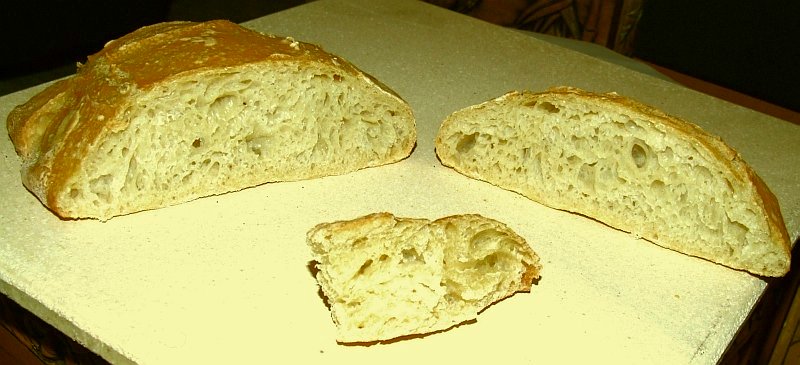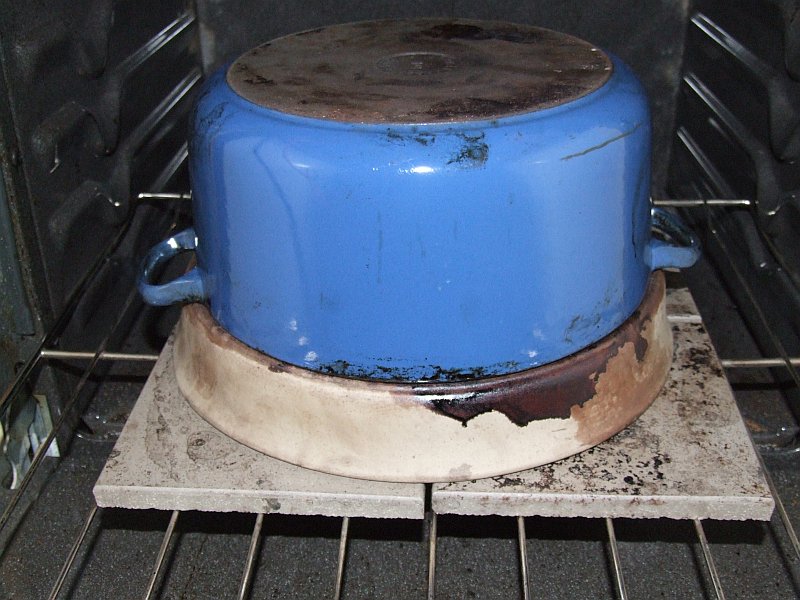BBA Pain de Champagne + Levain / Mysterious Results
Prior to the one-loaf mystery result of my last post, the openest crumb I've gotten from the BBA pain de champagne recipe was a few weeks ago when I modified the recipe to use a dose of the KA levain du jour (dried levain starter), the mild version. I basically made the sponge from this starter as per the instructions that come with it, but made sure the amounts of eveything in the end would total to the same as BBA recipe using the pate fermentee as usual. A second alteration I made was to put most of the rest of the flour (including the whole wheat) into a soaker.



